World of Design: See How 9 Families Live and Farm on Their Land
One in a series from Houzz international editors on how our lives shape home design around the world
For confirmed city slickers, living on a farm might not sound like much fun, but for families looking for fresh air, amazing views and a way of life based on the rhythms of the seasons and respect for the environment, it can be heaven. These nine families living in farmhouses around the globe — from the Italian mountains to the rolling countryside of New England — have cultivated their passions for growing fruits and vegetables, making traditional cheese, baking bread, raising livestock and producing honey, often using know-how passed from one generation to the next. Here, they share their farming histories and give us a glimpse of their bucolic lives.
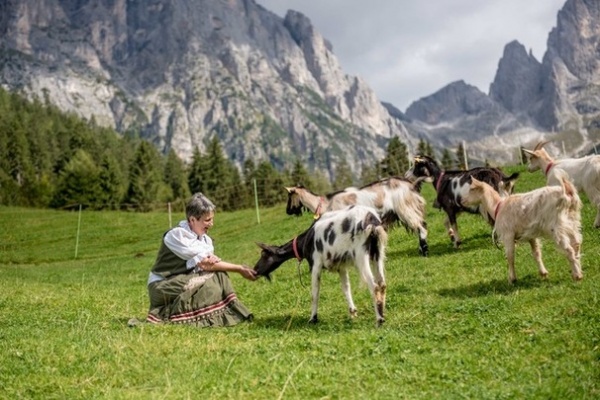
1. Farmhouse Welcomes Visitors to a Magical Spot in Italy
Who lives and farms here: Maria Giovanna (Gianna) Tavernaro, 58, above, and her husband; daughters Rita Cemin and Lucia Cemin, both in their 30s; and their grandchildren during the summer months
Location: Val Canali, a valley close to the town of Siror, in the province of Trentino, northern Italy, surrounded by the Pale di San Martino mountains in the Dolomites, a UNESCO world heritage site
Farm established: 1935
Gianna Tavernaro arrived at this malga — a typical small farm in the Alps — as an infant and grew up here. The family keeps ducks, goats, chickens, dogs, cows and rabbits and makes cheese. In the 1980s, it decided to open the farm to hikers who wanted to have a rest and eat.
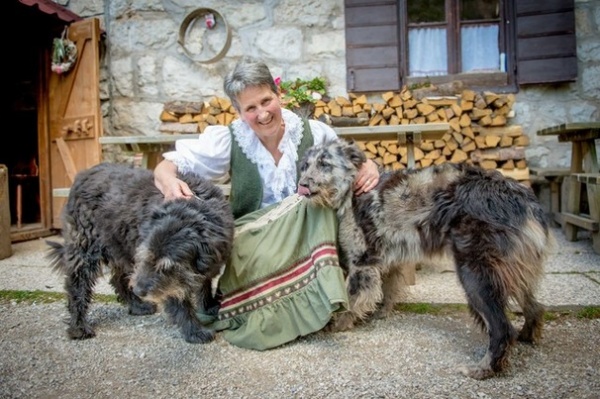
What they produce: With the milk from its cows, the family produces tosela, a type of cheese widely used in the traditional recipes of the Trentino area.
Who does what: Tavernaro takes care of the animals while her daughters take care of the food preparation.
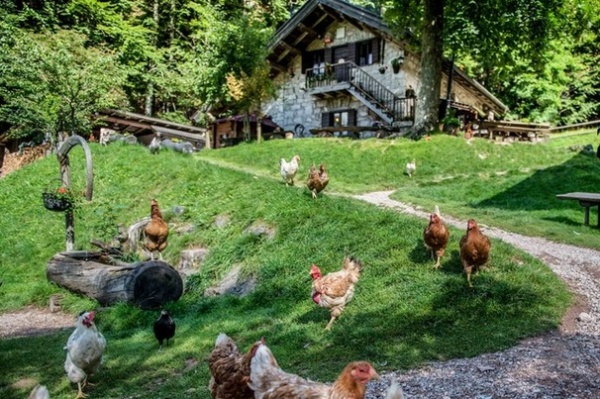
Typical day: Tavernaro and her daughters wake up early to feed the animals and check on the aging of the cheese. Then they start cooking for themselves and for the occasional walkers and hikers who stop in. “Over the years, the farm has become quite well known, so we regularly receive guests, especially in the summertime, but never on Sundays, when we prefer it to be just us,” Tavernaro says. Below are pictured her daughters, Lucia, left, and Rita, and grandson Giacomo.
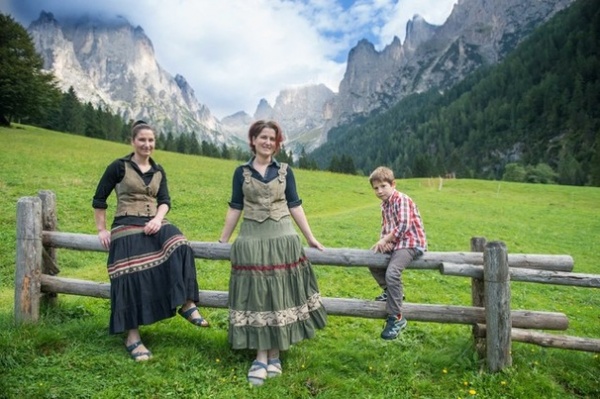
What she loves about living here: “This farm is my home,” Tavernaro says. “I love it because it’s a piece of my heart and part of my personal story. Every single object here is linked to my life. When someone comes here to visit, I want him or her to get in touch with our own story of mountain people.”
See more of this farmhouse and farm
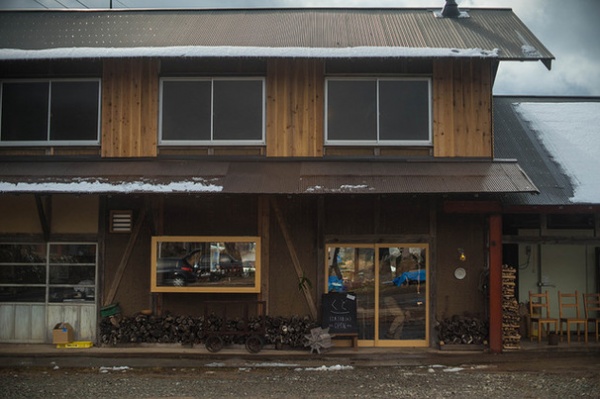
2. Renovated Home Away From Home on a Bio Farm in Japan
Who lives and farms here: Erika Takaya, 37; husband Yuji Takaya, 38; and Hiroki Kuwabara, 39
Location: Maniwa, Okayama Prefecture, Japan
Property built: About 1950
Erika and Yuji Takaya used to live and work in Tokyo, but their taste for organic food prompted them to study farming without chemical fertilizers or pesticides on a farm in Chiba Prefecture, where they met Hiroki Kuwabara. “When we were considering becoming full-time farmers and looking for a place around Chiba, the Great East Japan Earthquake occurred [in 2011], so we decided to find a place to live and start farming in a western part of Japan,” Yuji says. “Finally, in April 2012, we settled down here, along with Kuwabara, and established a farming unit called Hiruzen Kogei. Kudo, the building in the picture, is our kitchen, dining and workplace next to our fields. Although we all have our own houses five minutes from here by car, they are just a place to sleep for us, and Kudo is the center of our lives.”
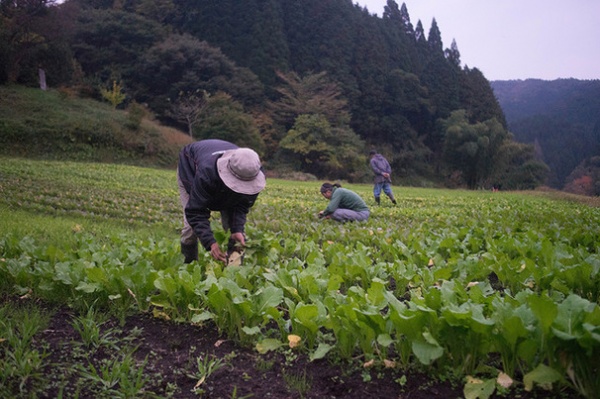
What they produce: “Our main crop is rice,” Erika says. “We produce some vegetables too, and they are consumed at Kudo or directly sold to some restaurants. A specialty is doibunkona, a kind of mustard spinach [pictured above] that’s traditionally grown in this region.”
Who does what: “To run a farm is busy. Each of us just does what we have to do,” Erika says.
Typical day: “It depends on the season, but usually we get up as the sun rises and go to Kudo,” Erika says. “After breakfast, each of us starts doing our own jobs — farming in the field, packing the food crops for shipping and so on. After lunch, we work until the evening. Around 6:30 p.m. we have dinner at Kudo. On Sundays and Mondays, we run a restaurant at Kudo and serve dishes made with our crops.”
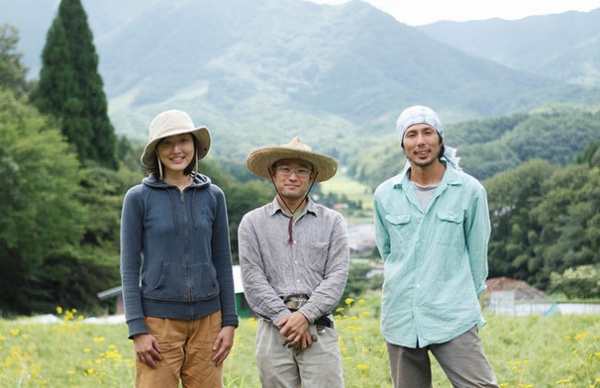
What she loves about being here: “When we found the house, it was totally run-down after someone had tried and failed to take it away and rebuild it in a different place,” says Erika, pictured above with Kuwabara, center, and husband Yuji, right. “While the roof, pillars and corrugated metal sidings were barely left, the floor and walls were taken away. In fact, the building was used as a stockyard at the time. So we renovated it, helped by our kind friends and neighbors. We enjoyed the process of creating the earthen walls very much, so we have a special affection for them.”
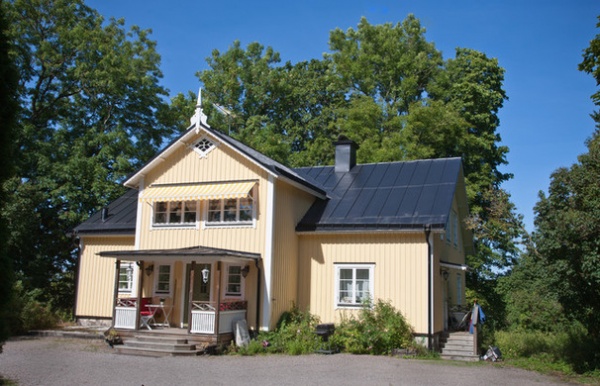
3. Ecological Farm and Dairy in Sweden
Who lives and farms here: Yvonne Edlund, 57, husband Hans Edlund, 63, and their daughters, Elin Edlund, 37, and Cecilia Edlund, 27
Location: Karl-Ivar Gården, Väddö, north of Stockholm, Sweden
Farm established: Hans’ ancestors started it in the early 1900s.
Yvonne and Hans Edlund, having lived on his great-grandfather’s farm since the 1970s, decided to turn their work into a business in 2005.
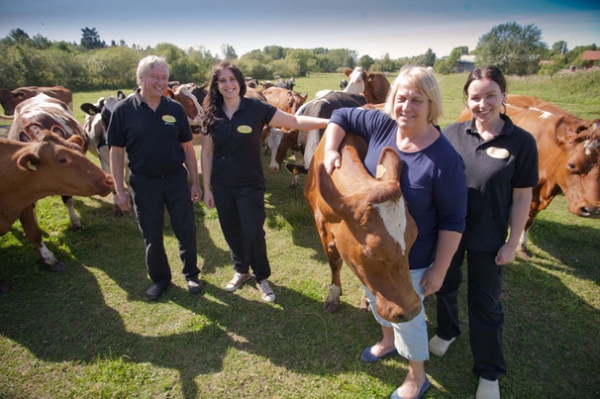
What they produce: “In the dairy we make seven different types of cheeses, as well as butter and yogurt, using milk from our 80 free-range cows,” says daughter Elin, pictured above on the right, with father Hans, left, sister Cecilia and mother Yvonne. “We make all the cheese by hand, just like in the old days. The cheeses are placed in vats, where they have to be turned manually so they get the right shape and the whey runs off. The whey is fed back to the cows, so it’s a fully sustainable model. There used to be plenty of milk farms here, with the farmers traveling to town to sell their milk. Now there are only two left.”
“We also grow all the fodder for the cows on our land, to avoid shipping it in via expensive and environmentally damaging truckloads,” Hans says. “I am passionate about ecological farming, and in the summers I arrange cow safaris and take visitors around the pastures on the back of the tractor to let them see where milk actually comes from.”
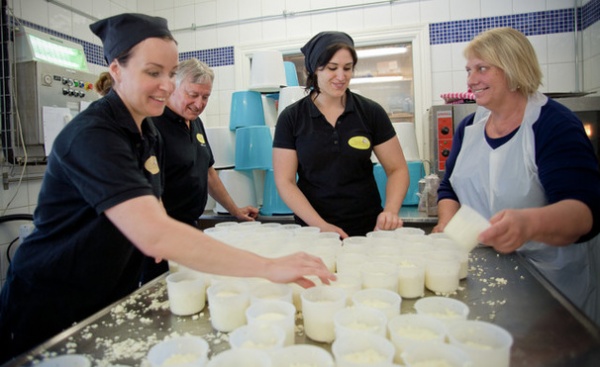
Who does what: “To make a company like this financially viable, we’ve all had to diversify into different areas,” Elin says. “I used to be in the hotel business, but I changed careers and am now responsible for the dairy. My sister, Cecilia, and her boyfriend, Johan, are in charge of the ice cream sales and bookkeeping; Dad travels to Stockholm to sell our cheese directly to restaurants; and Mum oversees the whole operation.”
Typical day: “It starts at 5:30 a.m., as all dairy farmers have to get up early,” Hans says. “In the summer, the workday is long as the farm is open to visitors and is a popular place for families to visit. A highlight of the year is the ‘cow release’ in early summer, when the cows are let out onto summer pasture after having been indoors over winter — and yes, they do go a bit crazy at the sight and scent of green grass!”
What they love about living here: “That we have been able to build our own house next to the original farm for me and my children,” Elin says. “It’s a two-story house, 187 square meters [2,013 square feet], with four bedrooms. We kept the outside the same style as an old farm.”
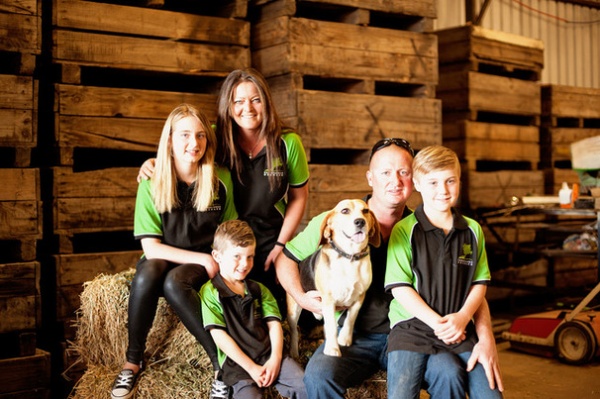
4. Family Compound and Stone Fruit Orchard in Australia
Who lives and farms here: John Christie, 68, and wife Patricia (Trish) Christie, 65; son Nathan Christie, 38, pictured above with his wife, Jaime Christie, 38, and their children, Kirra, 12, Mitchel, 10, and Byran, 5; plus Jaime’s mother, Lyn Luxford, 66
Location: Canoelands, north of Sydney, Australia
Farm established: 1923
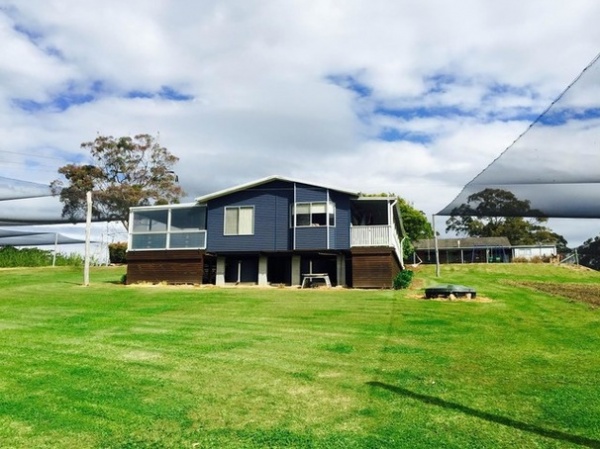
The farm, established by John Christie’s grandfather, is today being run by the second and third generations. “My husband, Nathan, and my father-in-law, John, have lived and worked here their whole lives,” says Jaime Christie. “My husband and I run the farm now, but John and Trish are still very much involved in the farming. My mum came to live with us six years ago when my dad passed away. You can see her house here, which was built in 2006. Ours is behind it and was built in the 1980s, and John and Trish’s house, built in the 1930s, is 250 meters [820 feet] away. The orchard runs either side.”
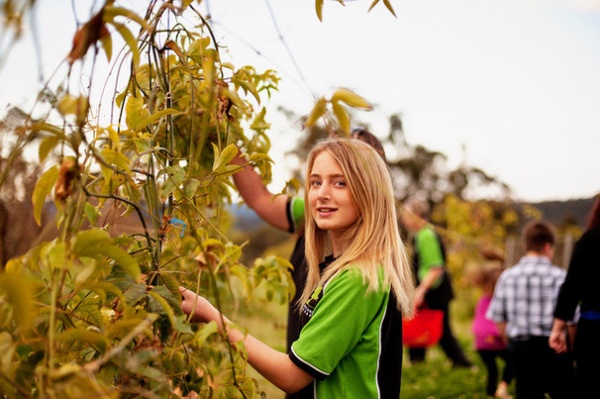
What they produce: “Nectarines, plums, peaches, passionfruit, tomatoes and apricots, and we will be planting persimmons, figs and blueberries over the next 12 months,” Jaime says. “Stone fruits are our main produce, but we also sell honey. We started beehives for pollination of our plums and then the honey grew into an important part of the business. Canoelands and surrounding areas have been some of the biggest fruit producers in the country for more than 100 years, and our farm has operated for 93 years. Practices have changed a lot over that time, but many of the original fruit farms are still in operation today, although they’re becoming rarer so close to the city.” Daughter Kirra helps out, above.
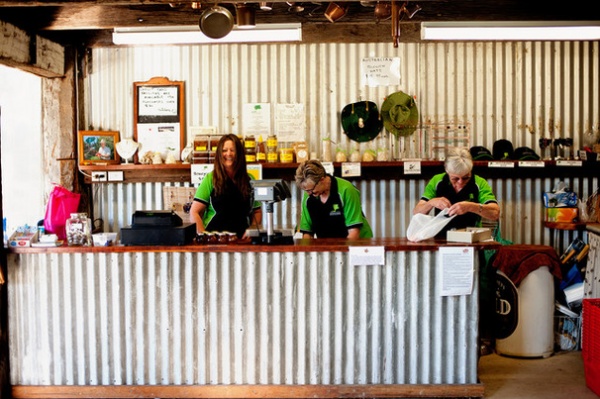
Who does what: Trish, above center, and Lyn, above right, generally work the farm shop and bottle and label the honey. Nathan does the picking (with the help of staff), the wood and tractor work and mowing, and gives tractor-ride tours. John does some of the tractor work, tractor rides, bees and honey extraction and works in the packing shed. Jaime, above left, runs the packing shed, does the bookkeeping, takes bookings for the farm, looks after communications and helps with the shop. The children help too. “When needed, they take groups out to pick or pack in the shed or in the shop on the counter,” Jaime says. “They’re all at school now, so we juggle the drop-off and pickup between Lyn, Trish and myself, depending on what the day brings. Lyn does homework with Byran and also cleans my house for me each week.”
Typical day: “During our major stone fruit harvest in November and December, we start work at 6:30 a.m. and finish around 5:30 p.m. In this time, we will harvest around 12 pallets of fruit for market,” Jaime says. “At other times of the year, we will harvest honey; thin, prune; and grow vegetable crops. We also split, sell and deliver firewood through the winter months — we’re always doing different jobs.”
What she loves about living here: “The amount of space, the countryside around us and the family that fills it,” Jaime says. “The fireplace doesn’t hurt either!”
See more of this farm
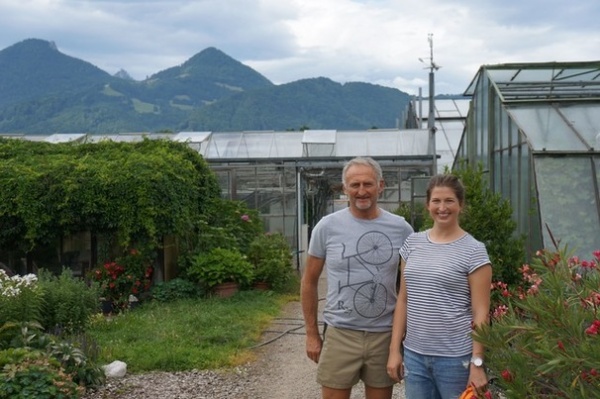
5. Family Fruit and Vegetable Nursery in Germany
Who lives and farms here: Franz Kling, 54, and his wife, Christa; their children, including Katharina, pictured above with her father; and Franz’s parents, Franz and Maria
Location: Grassau, Bavaria, Germany
Farm established: 1958
The farm, Gärtnerei Kling, was created by the younger Franz Kling’s parents. “It was two years before I was born,” he says. “My two siblings and I, as well as our children, have experienced living and working in the nursery from an early age.”
What they produce: “Right from the beginning we’ve produced vegetables and fruits in the nursery,” Franz says. “Since I took over the operation in 1994, we only produce for direct marketing in the region. This means we can produce a diverse range of products, as many as possible. There are some especially old cultivated and special varieties.”
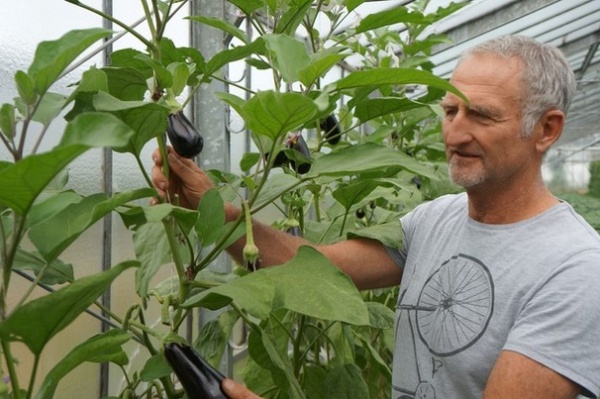
Who does what: “Christa and I are the main farmworkers — I am in the fields while she works in the little store and the office; both of us go to the farmer’s markets,” Franz says. “My parents also still work with us, although my father is 77 and my mother 80 years old. Our children live and work in the region as well and help out whenever necessary. My daughter Katharina, for example, works a lot in our little store where we sell our produce.”
Typical day: “Working in the nursery is clearly structured during the week. From Monday to Wednesday we are busy with planting and harvesting produce to sell from Thursday to Saturday at farmer’s markets in the region. In addition, a small farm shop next to our nursery and house has been opening daily since 1986. One of the huge advantages of working and living here is its location in Chiemgau, upper Bavaria. This allows us to spend any free time in the surrounding mountains or go to the nearby lake after work.”
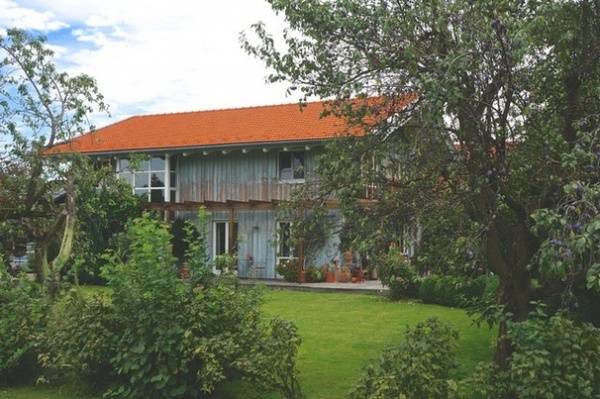
What he loves about living here: “Our house has large windows and bright rooms that create a connection between indoors and outdoors.”
See more of this property
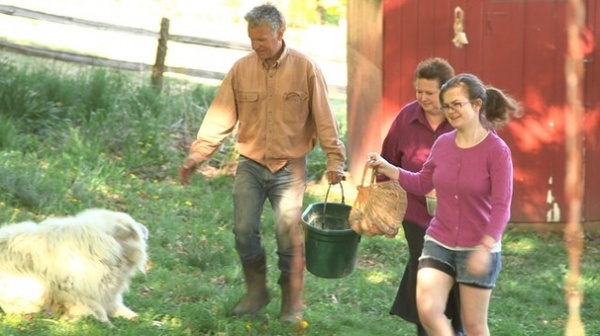
6. Counting Sheep in the U.S.
Who lives and farms here: Kristin Nicholas and Mark Duprey; daughter Julia Nicholas Duprey, 17; Winston, a Great Pyrenees livestock guard dog; Kate and Ness, both herding border collies; 25 chickens; seven cats; Eeyore the donkey; and Jeremy the llama
Location: Franklin County, Massachusetts, United States
Farm established: 1751
Soon after they married, Kristin Nicholas and Mark Duprey decided to move from eastern Massachusetts and return to Duprey’s farming roots. That was 31 years ago. “I’m an artist, author and blogger and my husband has his own business, but we initially got into sheep because I like to do things with fiber for my art and Mark loves animals and the land,” Nicholas says. “As a fourth-generation farmer, his farming roots are very strong. We bought four sheep before we got married. My mother jokes, ‘Some people get an engagement ring, but Kristin got four sheep!’ ” The size of the herd goes up and down, but before 2009 they had about 100 sheep; now they have several hundred.
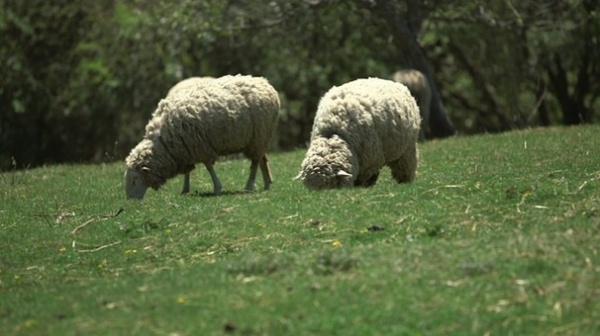
What they produce: Leyden Glen Farm sells pasture-raised lamb, nearly all of it to customers at the local farmer’s markets in Amherst and Northampton every Tuesday and Saturday. It comprises about 54 acres and has about 250 breeding ewes that graze within 8 miles of the farm.
The farm also produces a lot of hay. “Mark has a big tractor to mow the hay, then bale it,” Nicholas says. “The sheep graze freely from April to November, then they move to the home barn and spend December to March eating the summer-harvested hay. They have babies in January, which are weaned to graze on their own in April. When you live on a sheep farm, it’s very cyclical — year after year you ask, ‘What’s happening with the animals at that time of year?’
“In New England, the land is very suitable for sheep, because it’s hilly and grows good grass,” she says. “They’ve been reared here since the 1800s, and our area used to have tons of farms.” As the United States expanded, sheep farmers moved west to settle the land. The number of farms in New England shrank, and today the family’s sheep graze on land that belongs to neighbors who no longer farm.
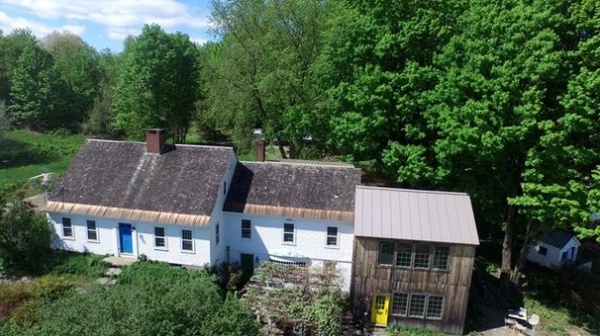
Who does what: Duprey oversees the animals, managing their food and health. Nicholas handles the marketing of the meat and relationships with the farmer’s markets. Daughter Julia helps them when they sell and nurtures and plays with the babies in the wintertime.
Typical day: “Amazingly, we don’t have to get up super early — we frame our day around daylight,” Nicholas says. “In the summer, the sheep don’t need as much care. We wake up, look out across the fields and check that everyone’s happy. Then we discuss what to do for the day. Mark checks the pastures, makes sure nobody is stuck in a fence and that there’s enough food. It’s hard to talk about a ‘typical’ day because our motto is really ‘Whatever is the most pressing emergency gets done first’ — such as if the tractor breaks!
“In the winter, we have to take care of the babies, so it’s a different workday. We check on whoever’s just been born, put them in pens and make sure they’re OK and their mothers are taking care of them. Then it’s all about food and putting hay in front of the animals two to three times a day.”
What she loves about living here: “The history — I always think about the people who lived here over the past 250 years,” Nicholas says. “I wonder how the heck they ever built the place completely by hand.” Among her other loves: “The porch in the summer, where we have coffee every morning and look out at the sheep grazing; the big farmhouse sink — it’s so deep it hides dirty dishes; the old windows that have antique panes of glass that are lilac, green and blue wavy glass; and my kitchen window, where I can watch the chickens pecking around.”
See more of this farmhouse
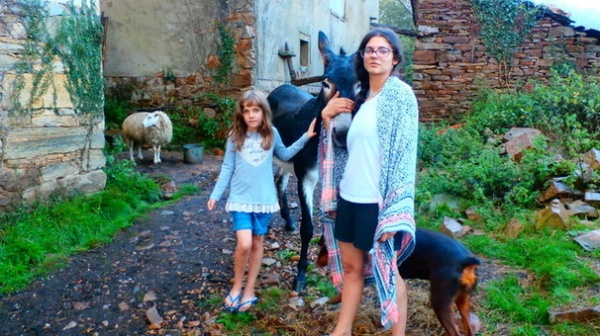
7. Family Home on a Mountain Farm in Spain
Who lives and farms here: Astrid Lema Jiménez, 27, and her husband, Isidoro Mayo, 49, plus, during the summer months, Astrid’s cousin Keila, 10
Location: Village of Folgueirón, Asturias province, Spain
Astrid Lema Jiménez grew up in Barcelona, but she dreamed of becoming a farmer. So four years ago she moved to Folgueirón, into the house formerly owned by her grandparents, who were farmers. Now she makes a living selling eggs, goat cheese and homemade bread in the villages nearby.
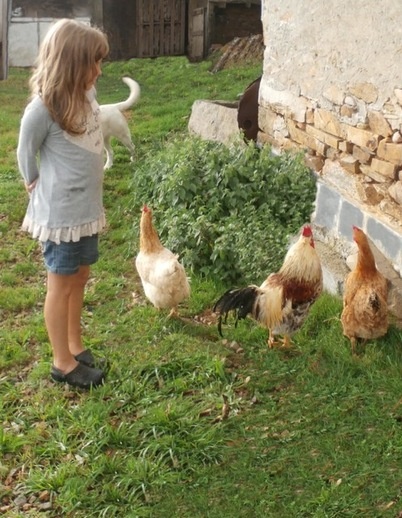
What they produce: “We own about 60,000 square meters of land, which is enough to have our goats, hens and chickens,” Jiménez says. “We produce the most tasty cheese you could imagine and we have a lot of eggs. I pick nettles, which are very numerous in this rainy region, to make soups and homemade ointments. I also make bread and bollos preñaos,” a bread stuffed with chorizo that’s common in the area. The chorizo Jiménez uses for her bread is produced in Otur, a tiny village near her home. The rolls are often eaten during spring and summer festivities in the Asturias, Cantabria and La Rioja regions of northern Spain, often accompanied by sidra, apple cider. Keila is pictured with the chickens.
What she does: “I bake the bread, collect eggs and clean out and feed the animals. Also, at least once a week, I prepare our very tasty goat cheese.”
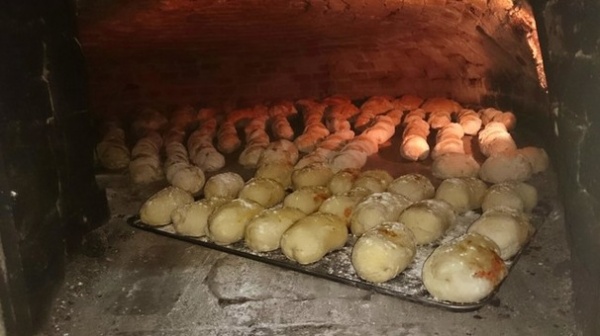
Typical day: “I wake up at 4:30 a.m. to prepare the oven and make the bread and the bollos preñaos,” Jiménez says. “Then I put everything in baskets and go to Luarca with my donkey. I leave the load at the bakery, where they sell most of it, and deliver the rest to other villages. In the afternoon, I take Turca, my donkey, and pick up pine, eucalyptus and yew sticks so I have enough wood for baking bread the next morning.”
What she loves about living here: “I love living here because of all the animals around us — foxes, deer, kites…. It’s like living in the middle of a TV wildlife documentary.”
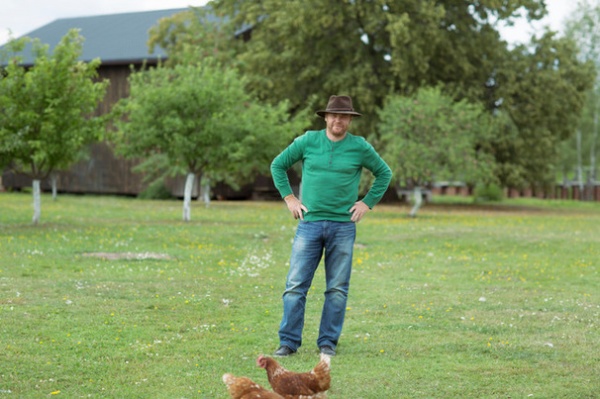
8. Farm and Guesthouse in Russia
Who lives and farms here: Vladimir Novikov, 46, his wife and their four children
Location: 81 miles (130 kilometers) south of Moscow, in the Tula region of Russia
It started when Vladimir Novikov left MGIMO university in Moscow and moved to the Tula region. “My ancestors are from Kashira, and I guess I felt the urge to visit my motherland,” Novikov says. “We went to the land committee with my father and got a 100-hectare [247-acre] piece of land for a farm, in a remote village without electricity. We moved into a converted container and started to cultivate the land. It turned out to be hard, because of flooding. While selling our first cabbage harvest we met the head of Zaoksky district and fought for another plot — it’s only 2 hectares [5 acres], but here I managed to achieve much more.”
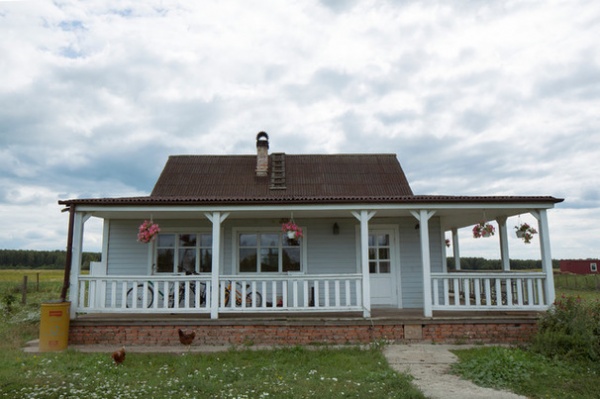
As soon as construction began, the local shepherd asked when they would be opening a tea room. “I found out there used to be a cafe on this land — that’s how the idea of building a local club and restaurant was born,” Novikov says. “We now have its skeleton ready and we are planning to finish all the decorations and open the place next year. To make relaxing in the countryside easier, I built four guesthouses where people can come to stay. For 20 years I’ve been working on this land using my own funds. I’m trying to avoid credit — that’s why the process is slow, but it’s working.”
What they produce: Novikov and his wife produce food mostly for themselves and try to sell the excess. He delivers some of their milk to an office in Moscow, for example. “In our kitchen garden, we mostly grow potatoes and pumpkins and a lot of fruits — apples, pears, plums,” he says. “I’m currently planning to rent some neighboring land, partly to grow grain crops but also to prevent cottage buildings being built nearby.”
Who does what: “I’m mostly busy with building at the moment,” Novikov says. “I need to decorate the interiors of the guesthouses and the club and build a barbecue spot. The plan is to open a summer cinema here soon. My wife is taking care of the garden and kitchen garden, and both our mothers help her.”
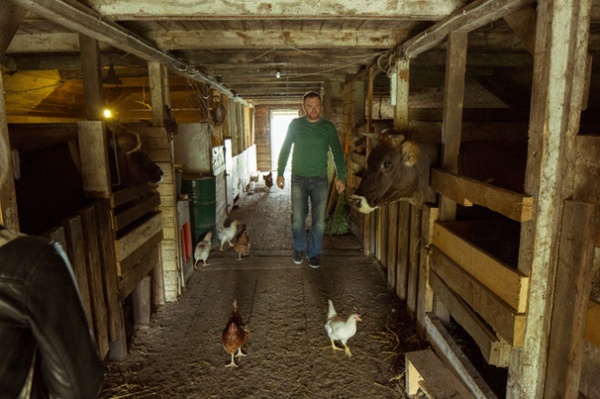
Typical day: “I come to my farm on the weekends; I work in Moscow throughout the week,” says Novikov, who can’t wait to become a full-time farmer. “I get up at 5 a.m. and go to bed at 11 p.m., but the day spent in the country always seems much longer than in the capital. It’s a life full of hard work, but it’s a happy life, where there’s room both for exhausting physical work and the amazing feeling of property. I start missing it as soon as I leave my farm to go to the city.”
What he loves about living here: “I love the feeling of cultivating our own land. I like realizing my plans, dreaming about building a summer club and some guesthouses on the farm — and making those dreams come true, using my own money and my resources. I like it because it’s nothing like a ‘fancy countryside’ — it’s not crowded with cottage owners. I like the garden we planted 15 years ago with my parents. Also, there is a 120-year-old linden tree I’m proud of.”
See more of this farm
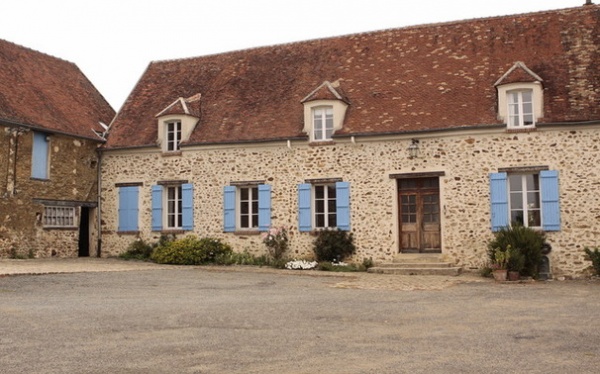
9. Producing Organic Grains on a Fourth-Generation Farm in France
Who lives and farms here: Eric Gobard, 46; his wife, Anne; and their daughters, Lucie, 9, and Armelle, 15. Sons Emmanuel, 18, and Baptiste, 19, are away studying
Location: Coulommiers, east of Paris, France
Farm established: 1895
Interesting fact: The farm was used in the French movie A Very Long Engagement
This year, La Ferme de Chantemerle celebrates its 120th anniversary and four generations of farmers. Eric Gobard has always lived at his great-grandparents’ farm, with his grandparents and parents, and has run it for 13 years. The farm, which has been certified organic for the last seven years, specializes in grains, as its rich soil is perfect for them.
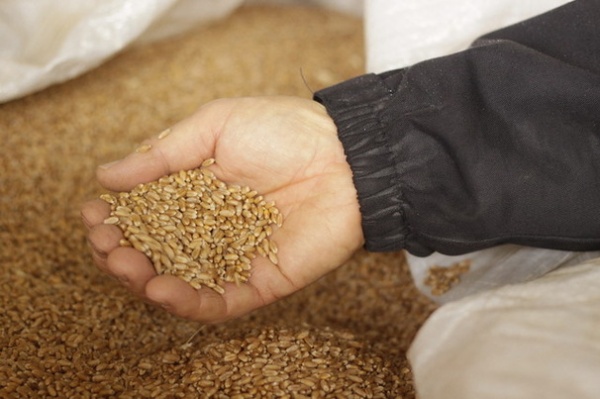
What they produce: Wheat, spelt, buckwheat, rye, lucerne (alfalfa) and linen (flax). “The fields are organized according to a 10-year rotation of the cultures,” Eric says. “For example, on the same part of the field, lucerne will be grown for two years, and it is then sold to a farmer who produces organic Coulommiers cheese, a specialty of this region. Then the tender wheat is sown, which benefits from the nitrogen left in the ground by the lucerne; then the linen; then wheat again; then French beans, which love poor ground; broad beans, which put nitrogen back into the ground; and finally buckwheat, which cleans the ground of germs.” It’s a natural way to ensure high quality and keep the ground both productive and rested.
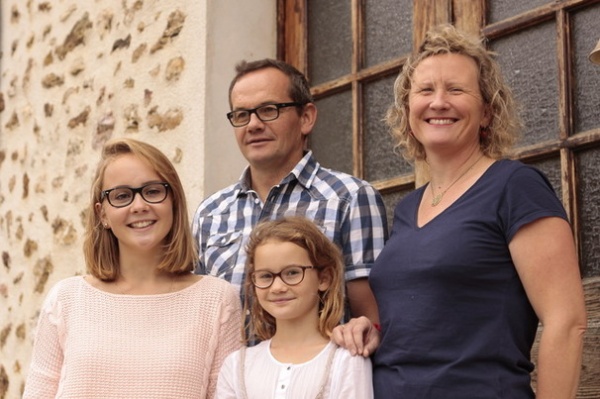
Who does what: For now, Eric and Anne run the farm alone. “Baptiste and Emmanuel left for their studies and want to work in sustainable energies,” he says. “But Lucie and Armelle love the countryside way of life and talk a lot about running the farm one day, so who knows?” Eric works in the fields and Anne handles the administrative and logistical aspects and goes to the markets to sell the crops.
Typical day: Eric’s and Anne’s days are intense. “In the morning, I work in the fields,” Eric says. “After lunch, I transfer grains into the silo, which is next to the modern mill. The evening is usually taken up with administrative tasks.”
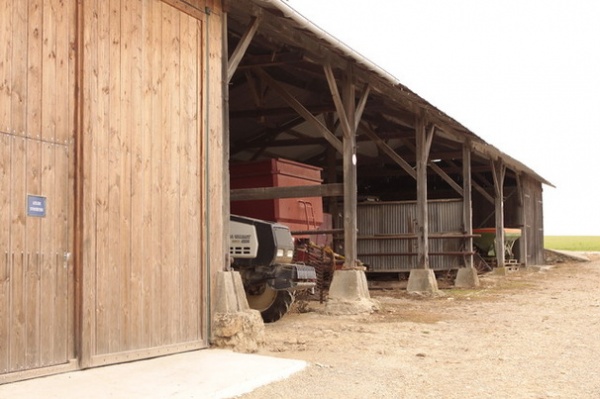
What they love about living here: The couple are passionate about the farm. They love passing on their knowledge to new generations and they teach organic farming in agricultural high schools. Anne also loves being able to get fresh eggs from their hens and fruit from their garden.
See more of this farm












